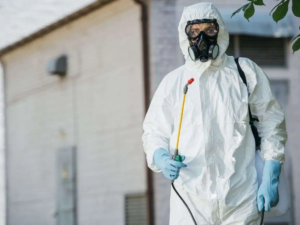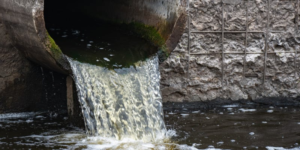Roofing is the uppermost layer of a building, protecting it from rain, snow, sunlight, and temperature extremes. It can be made of various materials.
The roof frame can be rafter-supported or prefabricated trusses. The sheathing is typically plywood or oriented strand board, but it may also be thicker wood or corrugated fiberglass panels.

Many different roofing materials are available for residential roofs, each with unique advantages and disadvantages. The type of roofing material you choose for your home should be based on the weather conditions in your area and your personal preferences. A professional roofing contractor can help you choose the best roofing materials for your home.
Some of the most popular roofing materials are asphalt shingles, wood shingles and clay or concrete tiles. The durability and lifespan of each roofing material varies significantly, depending on the climate, maintenance and other factors.
Rolled roofing is a durable and inexpensive roofing option that consists of long rolls of mineral-impregnated and asphalt-impregnated material topped with mineral granules. It is most often used on low-sloped residential roofs and on utilitarian structures like sheds, garages and workshops. Rolled roofing does not offer much aesthetic appeal, however.
Wood shingles or shakes are a natural roofing choice for homeowners who want a classic and rustic look to their homes. Made from cedar, redwood or pine, these shingles can be stained in any color. They work well in dry climates and require regular maintenance to prevent rot and mold growth. Wood roofs also provide excellent insulation and energy efficiency.
Slate is a luxurious roofing option that can add a dramatic aesthetic to your home. These beautiful roofs can last for centuries if properly maintained. This premium roofing material is incredibly durable and resists fire, high winds, UV rays and hail. However, slate is a heavy roofing material that requires a sturdy roofing structure to support its weight.
Clay and concrete tiles are another durable roofing option that can last for decades. These attractive tiles are made from earthen clays that can be molded into rolled or interlocking shapes and fired for hardness. They can be left unglazed for a distinctive reddish-orange appearance or glazed to produce various colors. They are most commonly seen in Southern coastal areas and desert regions due to their heat- and moisture-resistance. They are also quite expensive, but they can add a substantial value to your home.
Installation
If you’re a do-it-yourselfer, you may be tempted to tackle your own roof installation. However, if you’re afraid of heights or simply not physically fit enough to stand on a ladder for long periods, roofing is better left to the professionals. Before the crew begins installing your new shingles, they’ll find the best access point and begin setting up protective measures on your property. Tarps will cover anything that’s near the base of your roof and wooden boards will be placed over any plants or pools to keep them from getting wet. Ladders and shingle cutters will be set up, as well as other standard roofing tools like caulk guns, hammers, and nail guns.
Once the new shingles are in place, they’ll be sealed with a waterproofing vapor retarder that will prevent moisture from seeping into interior spaces like your attic or your kitchen. The valleys, where the slopes of your roof meet in a “V” shape, will also be sealed to prevent water from pooling and damaging your home’s structure. Lastly, the exposed edges will be covered with a thick layer of roofing caulk to make sure they’re fully protected from water intrusion.
Maintenance
The roof is a vital part of a building’s structure. It protects the occupants from rain, snow, sunlight and wind. It is also an integral part of the heating, ventilation and air conditioning system. The roofing system can be constructed from a variety of materials, such as asphalt shingles, metal sheets or tiles.
Roof maintenance includes regular inspections of the roofing system and repair of any damage or deterioration. Ideally, these activities should be performed before the problem becomes a major issue. In the real world, however, many of these tasks are ignored or delayed. When a leak occurs, it is suddenly apparent why the roof was not properly maintained.
In addition to a regular survey of the roof field, the following activities should be performed as part of an effective preventive maintenance program:
Performing Housekeeping Surveys – These surveys are conducted monthly and involve examining the entire roof surface for damage, environmental deterioration or other conditions that warrant corrective action. Ideally, this should be done by trained personnel.
Clearing Debris – This is a weekly activity during the fall and spring, and involves removing debris from drains, scuppers and gutters. Allowing debris to accumulate on the roof restricts drainage and accelerates membrane deterioration. De-icing salt should be avoided, as it can corrode metal drain lines and roof membranes.
Removing Damaged or Worn-Out Shingles and Membrane – This is performed by qualified roofing mechanics. If left unattended, these problems will continue to deteriorate and lead to roof leaks or structural damage.
Fixing or Reinforcing Supports for Rooftop Equipment – This involves repairing supports for HVAC units, solar panels and other rooftop equipment to ensure they are secure and in good condition. Coating and Sealant Application – This includes applying protective coatings or sealants to enhance the durability of the roof and improve energy efficiency. Skylight Maintenance – This includes inspecting skylights, ensuring that they are sealed and in good condition, and repairing any cracks or gaps.
In addition to these general maintenance activities, a roofing company can also help with sagging or damaged roofs. They can also help to clean and seal the surface of a roof, remove organic growth like moss or algae, and replace any broken or missing shingles.
Safety
Whether you’re installing a new roof, repairing an existing one or re-roofing an old home, safety is an important consideration. There are a number of steps that can be taken to ensure that everyone on the job site is safe from harm. These include using appropriate personal protective equipment (PPE), planning for material delivery, securing tools and equipment and implementing an emergency plan.
Fall hazards are the leading cause of injuries and deaths in roofing, primarily due to the fact that workers must work at significant heights. It’s imperative to use guardrails, safety nets and personal fall arrest systems, as well as provide workers with comprehensive training on their use.
Other major risks of roofing involve electrical hazards, such as inadvertent contact with energized power lines. These can result in severe injuries and fatalities. To mitigate these risks, keep a safe distance from power lines and only use non-conductive ladders. Also, ensure that all workers wear PPE like gloves, ear protection and eye goggles when working on the roof.
Another common roofing safety hazard is slips and falls, which can occur on wet surfaces or if a worker loses their balance while climbing. To reduce these risks, it’s essential to use non-slip footwear and to remove debris and trash from the work area frequently. Additionally, it’s vital to have a clear communication system in place to alert all workers to changing weather conditions or other changes on the roof.
Lastly, it’s important to use proper insulation in your home. This will help to prevent damage caused by the sun’s rays, as well as from snow and wind. A professional contractor will be able to advise you on the best type of insulation for your home and climate, as well as how to properly install it.
In addition to taking these precautions, it’s vital to follow OSHA standards and conduct regular inspections of the roof. This will allow you to identify and address any issues before they become a serious safety risk. In addition, you should be sure to maintain a first-aid kit on the roof in case of an emergency. Finally, you should have a clearly marked exit route and indicate the location of fire extinguishers and eyewash stations.








